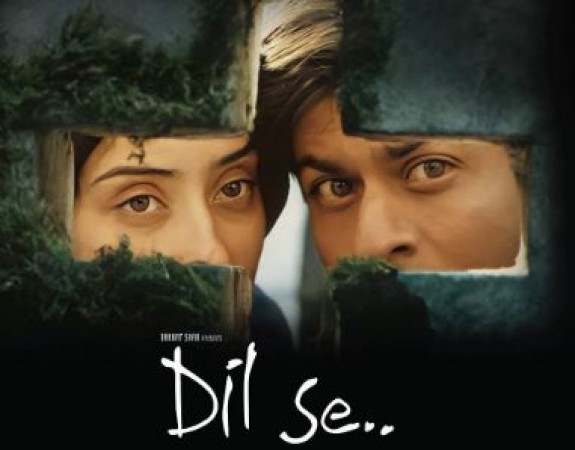
The renowned Indian director Mani Ratnam is responsible for the artistic triumph "Dil Se..." The 1998 movie, which features an intense love story set against the backdrop of an insurgency in northeastern India, was well received. The visually stunning parade scenes that perfectly capture India's cultural diversity and vibrant traditions are among the film's most memorable features. Due to the fact that they were recorded during India's 50th anniversary of independence celebrations, these scenes are even more noteworthy. In this piece, we'll explore the significance of these parade scenes, the difficulties they posed to the production team, and how they added to "Dil Se's" overall plot.
It's crucial to comprehend the historical significance of the 50th anniversary of India's independence, which took place in 1997, in order to appreciate the parade scenes in "Dil Se..." This significant event was a historic occasion for the country because it marked 50 years since India was freed from British colonial rule. The Indian government and people were committed to making this event's commemoration grand and memorable.
Mani Ratnam, who is renowned for his ability to incorporate social and political themes into his films, understood the symbolic significance of the country's 50th anniversary of independence. He took advantage of the chance to produce visually stunning parade scenes that celebrated the event while also illuminating India's rich cultural diversity.
At India Gate in New Delhi, one of the film "Dil Se..."'s most recognisable parade scenes occurs. This scene's backdrop is the grand building itself, an iconic war memorial with great historical and sentimental value for the country. Deliberate care was taken in selecting the setting so that the movie could honour the sacrifices made by Indian soldiers and the spirit of nationalism that unites the nation.
The parade scene is a visual extravaganza that displays the variety of Indian traditions, from classical dance to martial arts. A mesmerising tableau that perfectly captures the spirit of India is made up of the colours, the music, and the choreography. Intricate routines performed by traditional dancers from different states, each wearing their own distinctive attire, highlight the nation's diverse cultural heritage.
It was a difficult task to film the parade scenes for "Dil Se..." during the actual celebrations of India's 50th anniversary of independence. Given the large number of attendees and the stringent security measures in place for the event, there were enormous logistical challenges. To obtain the required permissions and clearances, Mani Ratnam and his team had to cooperate closely with the authorities.
The filmmakers also had to deal with unpredictability in the weather. It can be a difficult challenge to shoot outside in India, especially during the monsoon season. Rain and humidity can damage equipment and cause delays. However, the team's commitment to capturing the vivacity of the parade scenes won out, and they were able to get past these challenges thanks to careful planning and resourcefulness.
The parade scenes in "Dil Se..." hold great cultural significance in addition to the technical difficulties. They serve to remind people of India's diversity and unity. The nation's ability to peacefully coexist with a variety of languages, religions, and traditions is its greatest asset. The parade scenes are a reflection of this cultural symphony, emphasising the shared bond of being Indian while showcasing the distinctive identities of various regions.
Additionally, "Dil Se..."'s parade scenes honour the tenacity of the Indian spirit. The people of India continue to unite to celebrate their country's accomplishments and progress in the face of insurgencies and difficulties. As the love story develops against the backdrop of conflict in the Northeast, this resiliency serves as a major theme in the movie.
The parade scenes in "Dil Se..." are more than just ornate spectacles; they play a crucial role in the story. They provide a powerful counterpoint to the underpinning themes of rebellion and violence. The parade scenes offer a glimmer of hope, a reminder that the spirit of India endures despite the difficulties, as the protagonists struggle with emotional and political upheaval.
Shah Rukh Khan's character Amar, who is the movie's main character, is drawn to India's beauty and diversity as he watches the parade. His character changes during these times, and he starts to value the nation more than its outward appearance. His emotional journey and ultimate redemption are sparked by the parade scenes.
The parade scenes in "Dil Se..." are more than just decorative elements; they represent the spirit of India. Shot on the occasion of India's 50th anniversary of independence, they capture the spirit of a country that values its diversity and perseveres in the face of hardship. These scenes were brought to life by Mani Ratnam and his crew through painstaking planning and perseverance, becoming a crucial component of the storyline.
The film "Dil Se..." continues to stand as a testament to the ability of cinema to honour a country's cultural heritage, evoke its emotional depths, and capture its enduring spirit. With their grandeur and symbolism, the parade scenes have left an indelible impression on viewers, serving as a constant reminder of India's beauty and unity.
Akshay Kumar and Anupam Kher's Evergreen Bond
Praveen Vyas Takes Legal Action Against 'Toilet: Ek Prem Katha'
The Song That Rescued 'Roop Ki Rani Choron Ka Raja' After 5 Years